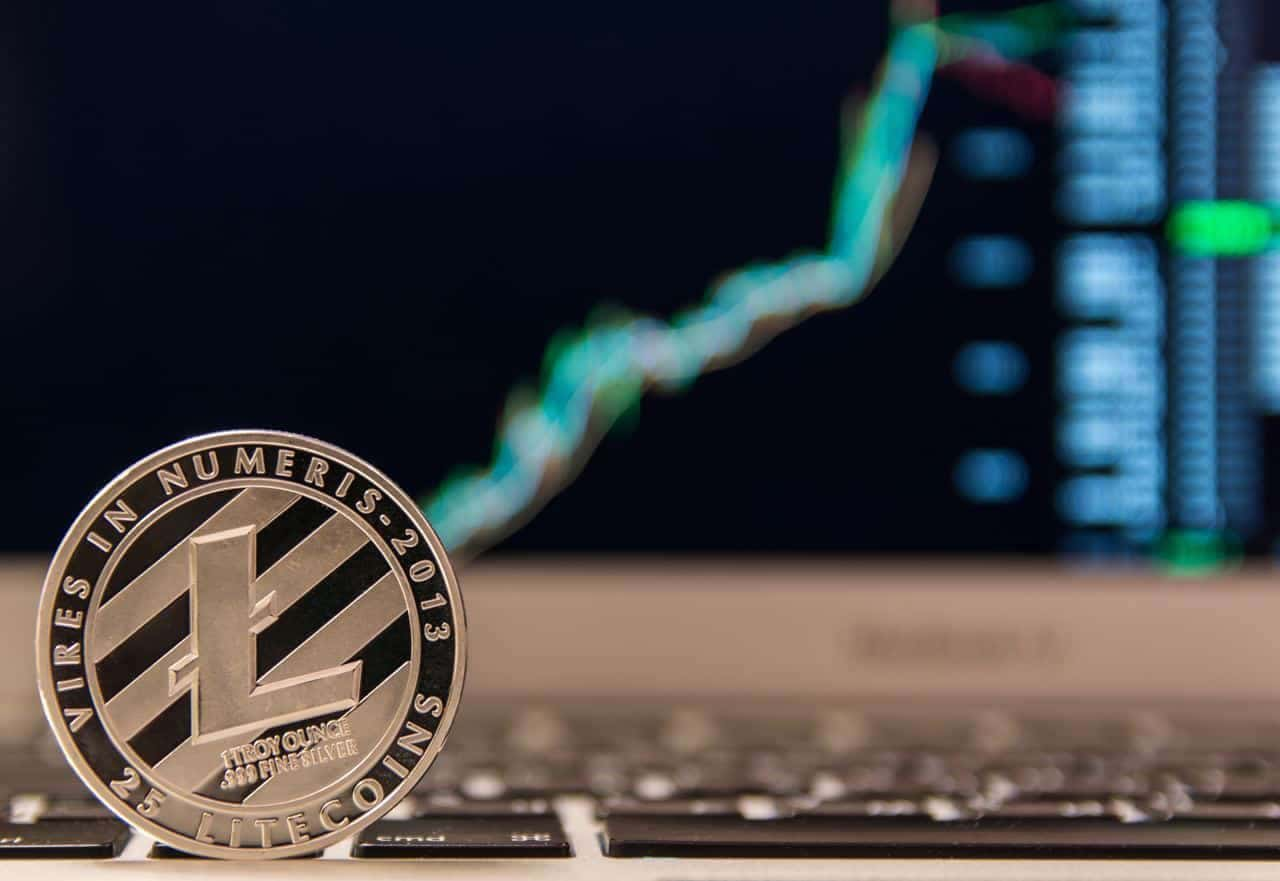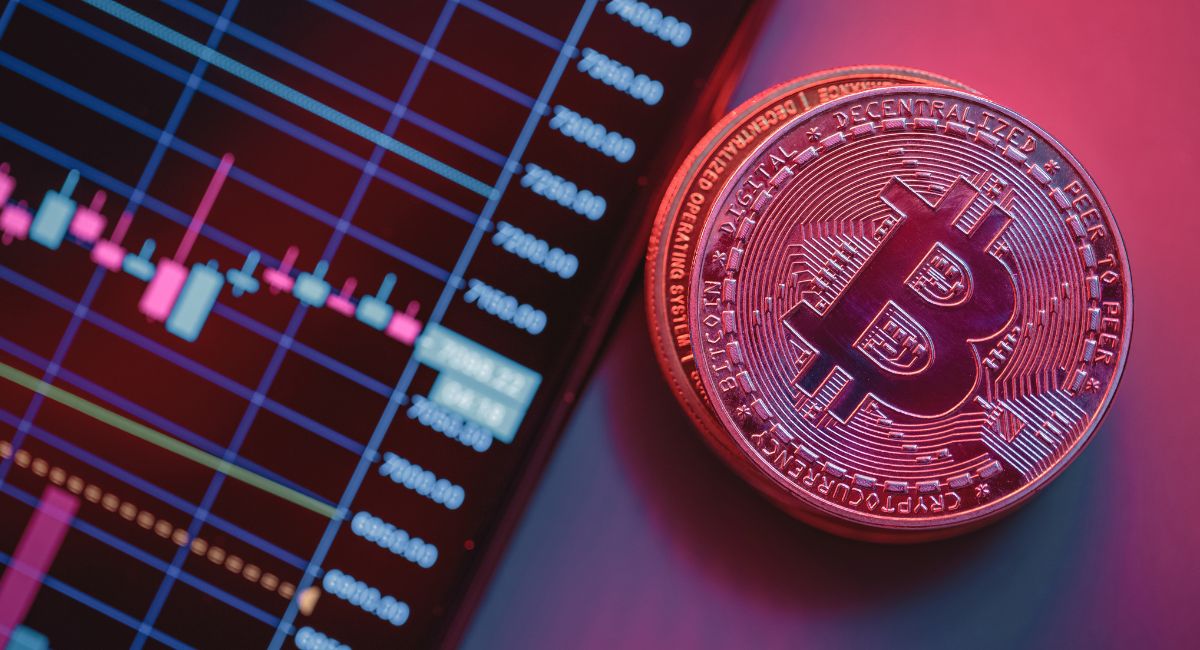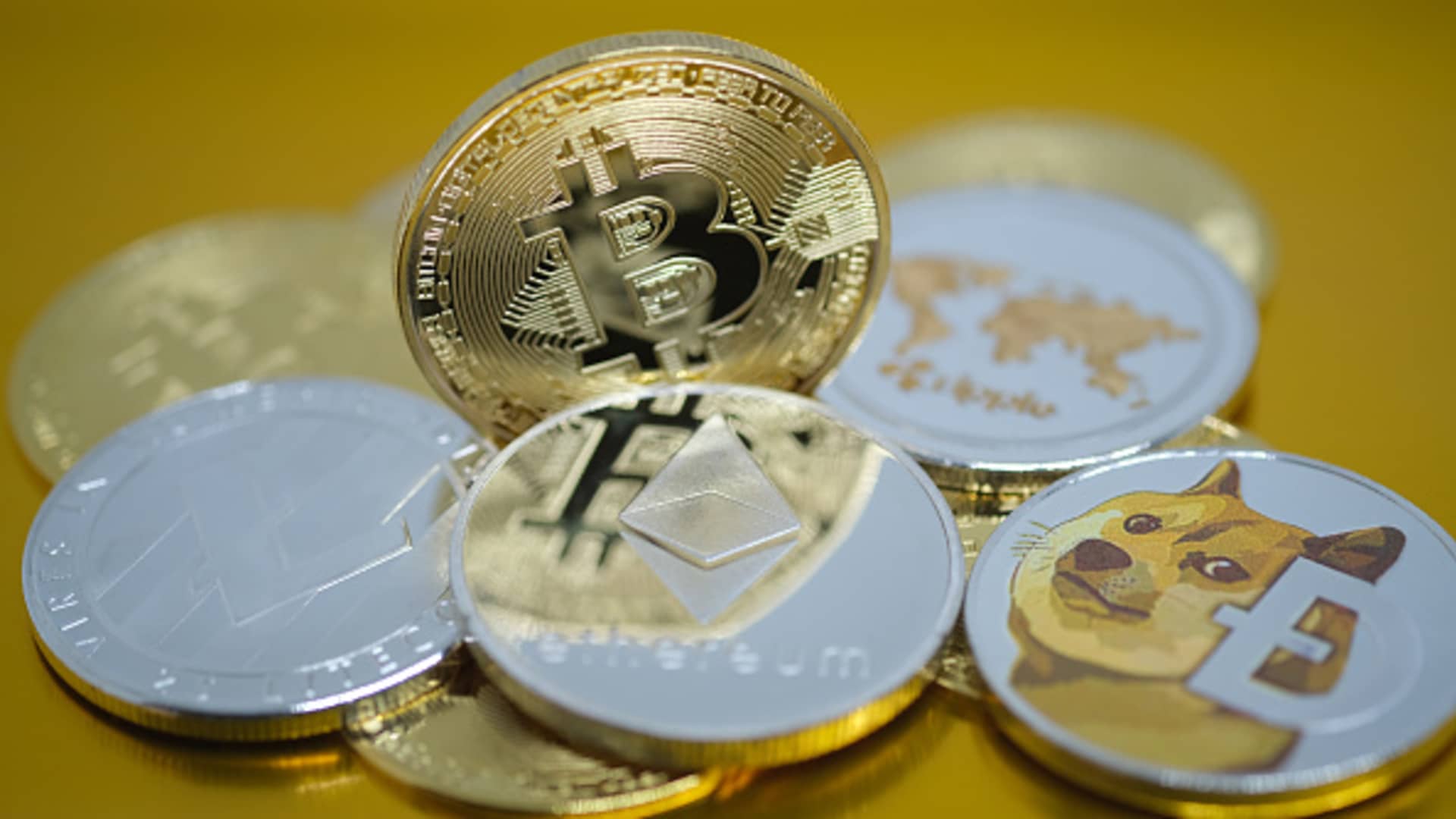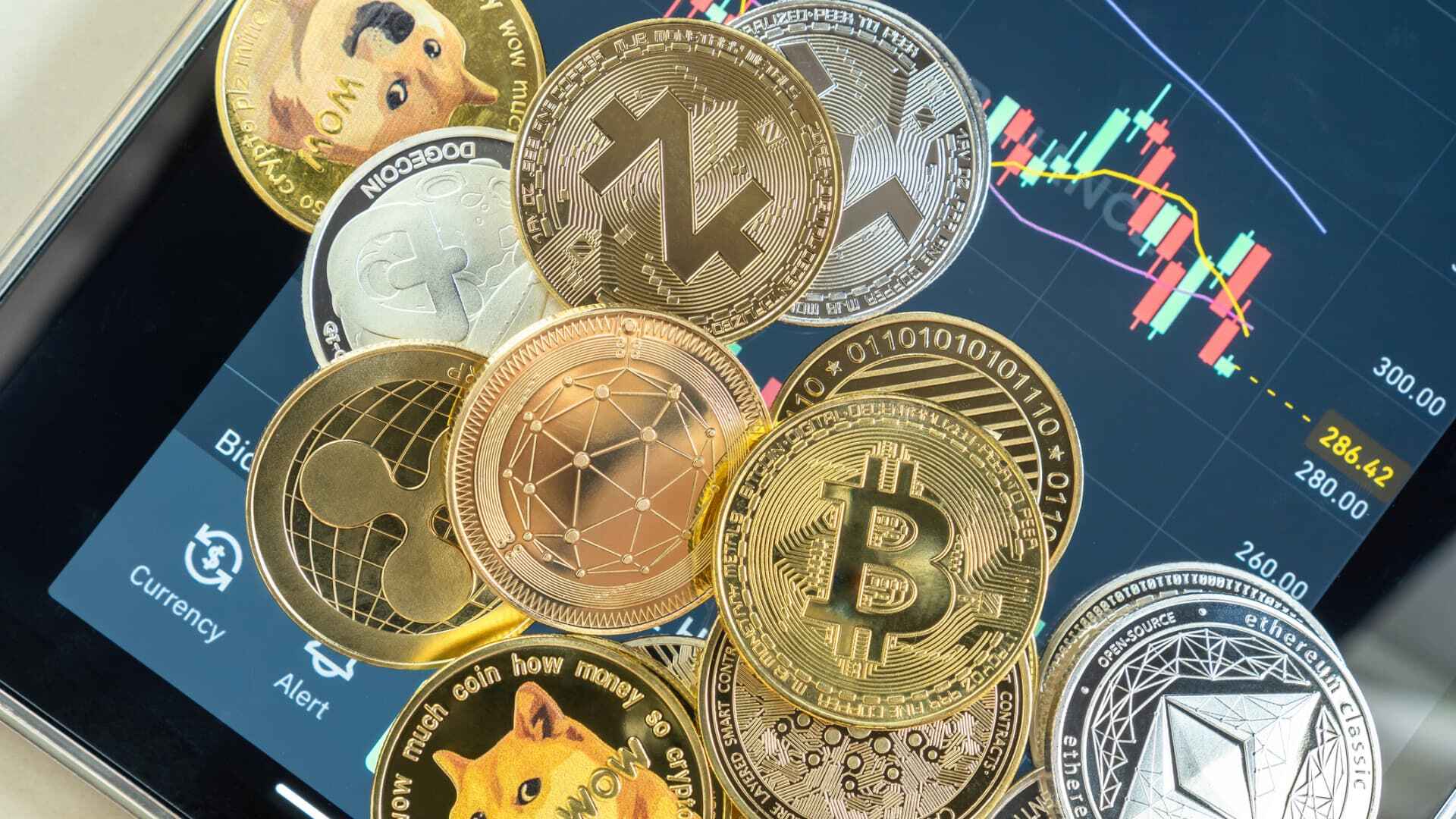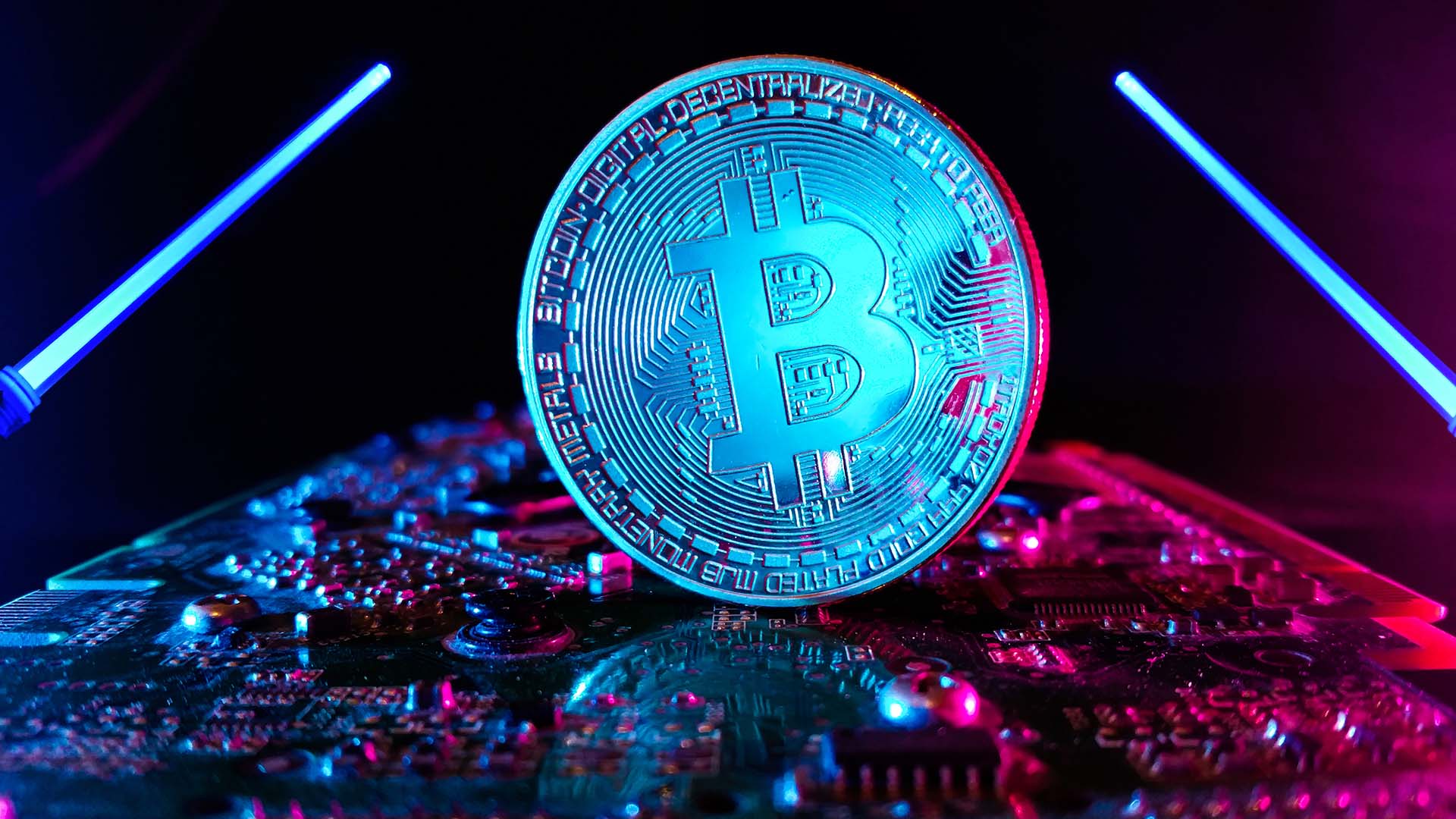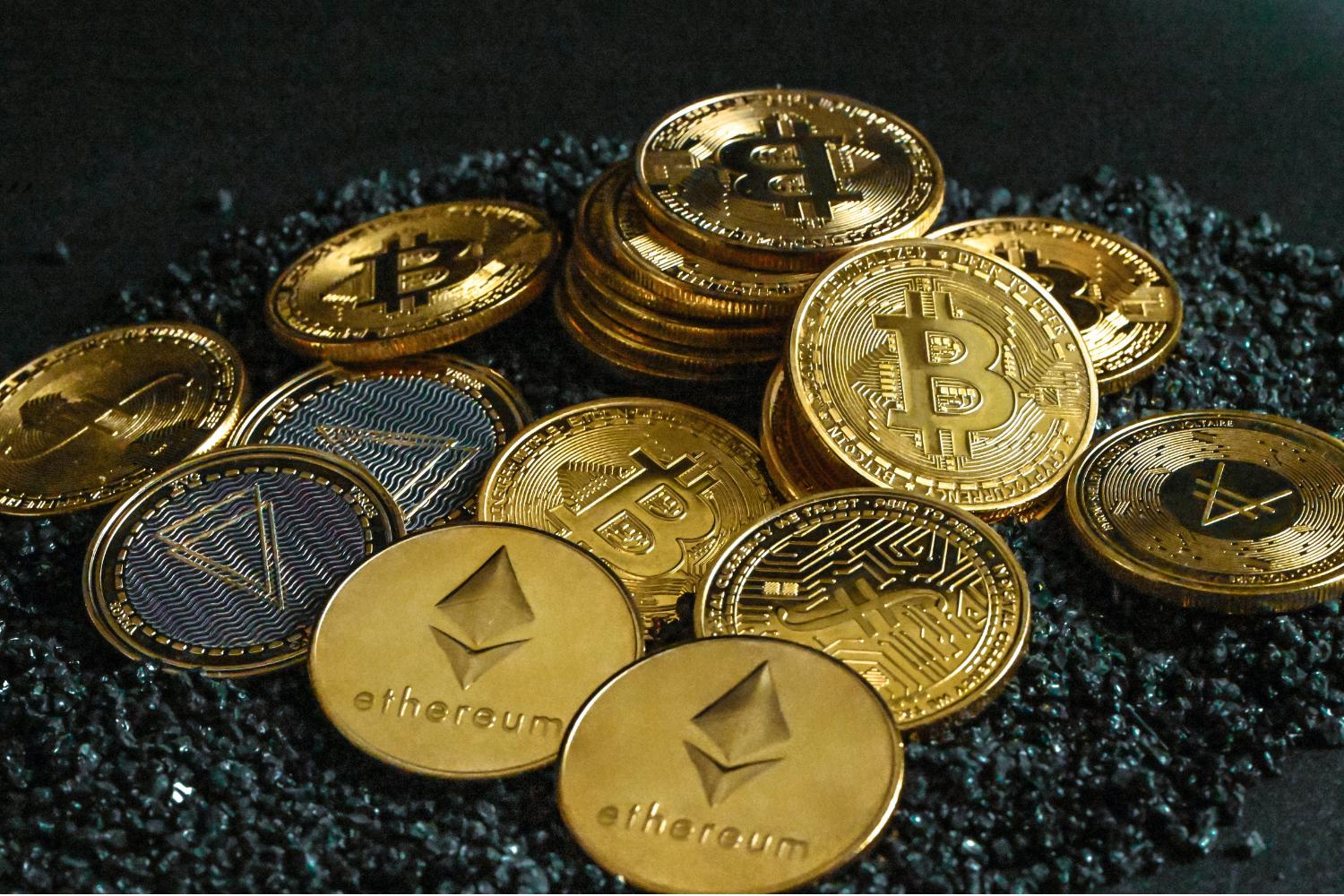Introduction
Welcome to the world of Initial Coin Offerings (ICOs)! If you’re new to the world of cryptocurrency, you may be wondering what an ICO is and how you can participate. In this article, we will explore the process of participating in an ICO using Litecoin, one of the leading cryptocurrencies in the market.
ICOs, also known as token sales, are a means for blockchain projects to raise funds by offering digital tokens to investors. These tokens can have various purposes, such as granting access to a platform, representing a stake in a project, or even serving as a currency within the project’s ecosystem.
Litecoin, often referred to as the digital silver to Bitcoin’s gold, is a popular choice for participating in ICOs. With its fast confirmation times and low transaction fees, Litecoin provides a convenient and cost-effective way to contribute to token sales.
Participating in an ICO involves a few essential steps, including finding and choosing an ICO, setting up a Litecoin wallet, transferring Litecoin to your wallet, registering and contributing to the ICO, staying updated with the project’s progress, and finally, claiming your tokens. So, let’s dive into the world of ICOs, with Litecoin as our chosen medium.
What is an ICO?
An Initial Coin Offering (ICO) is a fundraising mechanism used by cryptocurrency projects to raise capital. It is similar to an Initial Public Offering (IPO) in traditional finance, but instead of offering shares of a company, ICOs offer digital tokens or coins.
ICOs enable blockchain projects to raise funds directly from the public, allowing individuals to invest in the project at an early stage. In return for their investment, participants receive a certain number of tokens that can be used within the project’s ecosystem or traded on cryptocurrency exchanges.
One of the main advantages of an ICO is that it provides an opportunity for anyone to invest in a project, regardless of their geographical location or financial status. This democratized approach to fundraising has led to the rapid growth of the cryptocurrency market and the emergence of countless innovative blockchain projects.
ICOs typically have a predefined period during which participants can contribute funds. Once the fundraising period ends, the project team will distribute the tokens to the investors based on their contribution amount. The success of an ICO is often measured by the amount of capital raised and the level of interest from the cryptocurrency community.
It is important to note that investing in ICOs comes with its own set of risks. The cryptocurrency market is highly volatile, and not all projects succeed in delivering their promised goals. It is crucial for investors to conduct thorough research and due diligence before participating in an ICO to mitigate potential risks.
Overall, ICOs have revolutionized the way startups and blockchain projects raise capital. They provide an accessible and inclusive funding model that has empowered countless entrepreneurs and investors around the world.
Why use Litecoin for an ICO?
When it comes to participating in an ICO, there are various cryptocurrencies to choose from. However, Litecoin stands out as a popular choice for several reasons.
Firstly, Litecoin offers faster confirmation times compared to Bitcoin. While Bitcoin transactions can take several minutes or even hours to confirm, Litecoin transactions typically confirm within minutes. This speed is crucial when participating in an ICO where time-sensitive contributions may be required.
Secondly, Litecoin boasts lower transaction fees compared to Bitcoin. Cryptocurrency transactions often come with a fee, and these costs can add up, especially during periods of high network congestion. With its lower fees, Litecoin makes participating in ICOs more cost-effective, allowing participants to maximize their contribution amount.
Furthermore, Litecoin has a strong reputation for security and stability. As one of the oldest and most established cryptocurrencies, Litecoin has proven to be a reliable and trustworthy blockchain network. This stability is attractive to both users and ICO projects, as it minimizes the risk of technical disruptions or security breaches.
Additionally, Litecoin has a large and active community. This vibrant community provides a supportive environment for ICO participants and project teams. It also means that there is a wider network effect, with more people using and accepting Litecoin, increasing its utility as a means of participating in ICOs.
Lastly, Litecoin’s compatibility with various wallets and exchanges makes it convenient for participating in ICOs. Most ICOs accept contributions in major cryptocurrencies, and Litecoin is often included in this list. This widespread acceptance simplifies the process for participants, providing them with more options to contribute to their desired projects.
Overall, Litecoin’s faster confirmation times, lower transaction fees, strong security, active community, and compatibility with wallets and exchanges make it an excellent choice for participating in ICOs. By using Litecoin, participants can enjoy a seamless and cost-effective experience while supporting innovative blockchain projects.
Finding and choosing an ICO
With the increasing popularity of ICOs, it’s important to approach the process of finding and choosing an ICO with careful consideration. Here are some steps to help you navigate through the vast array of projects and find the right ICO to participate in:
- Do your research: Start by researching and staying updated on the latest ICOs. There are various websites, forums, and social media channels dedicated to tracking and discussing upcoming ICOs. Explore these platforms to gather information about different projects, their teams, their goals, and their potential for success.
- Evaluate the project: Once you find an ICO that piques your interest, dive deeper into the details. Read the project’s whitepaper, which outlines the technology, use case, and value proposition of the project. Assess the team’s experience and credentials to gauge their ability to execute the project. It’s also important to evaluate the market demand and potential competition for the project.
- Consider the token economics: Examine the token economics of the ICO. Understand the distribution model, token supply, and any vesting schedules for team members or advisors. Assess if the token allocation is balanced and fair, avoiding projects with excessive token allocations to insiders.
- Check the project’s roadmap: Review the project’s roadmap to get an idea of the development timeline and milestones. A clear and well-defined roadmap indicates that the project has a solid plan for execution. Look for realistic goals and a roadmap that aligns with the project’s overall vision.
- Assess the community and social media presence: Evaluate the project’s community engagement and social media presence. A strong and active community is a positive sign of interest and support. Look for projects that actively engage with their community, provide updates, and respond to questions and feedback.
- Read reviews and seek expert opinions: Look for independent reviews and expert opinions about the project. These insights can provide valuable perspectives and help you gain a better understanding of the project’s potential and risks. However, avoid relying solely on reviews and always conduct your own due diligence.
By following these steps, you can find and choose an ICO that aligns with your interests, goals, and risk appetite. Remember to always be cautious and investigate thoroughly before contributing your funds to any project. Investing in ICOs carries inherent risks, and it’s essential to make informed decisions to protect your investments.
Setting up a Litecoin wallet
Before you can participate in an ICO using Litecoin, you’ll need to set up a Litecoin wallet to securely store your funds. Here’s a step-by-step guide on how to set up a Litecoin wallet:
- Choose a wallet: There are various types of Litecoin wallets available, including desktop wallets, mobile wallets, web wallets, and hardware wallets. Consider your needs and preferences to choose the right wallet for you. Desktop wallets like Electrum-LTC and Exodus provide secure offline storage, while mobile wallets like LoafWallet offer convenience for on-the-go transactions.
- Download and install the wallet: Once you’ve chosen a wallet, visit the official website or app store to download and install the wallet application. Be cautious of fake or unofficial wallets, and ensure you’re downloading from reputable sources.
- Create a new wallet: After installing the wallet, open the application and follow the prompts to create a new wallet. You will usually be asked to choose a password or passphrase to secure your wallet. Make sure to choose a strong and unique password that you can remember.
- Backup your wallet: It’s crucial to create a backup of your wallet to protect against loss or device failure. Most wallets will provide you with a recovery phrase, which is a series of randomly generated words. Write down these words and keep them in a safe place. This recovery phrase will allow you to restore your wallet and access your funds if needed.
- Secure your wallet: Take additional measures to secure your wallet, such as enabling two-factor authentication (2FA) if available. This adds an extra layer of protection to your wallet and helps prevent unauthorized access.
- Receive your Litecoin address: Once your wallet is set up, you will be provided with a unique Litecoin address. This address is like your account number and is used to receive Litecoin. You can share this address with others when participating in an ICO to receive the tokens you contribute.
By following these steps, you can set up a Litecoin wallet and ensure that your funds are safely stored. Remember to keep your wallet and recovery phrase secure and avoid sharing them with anyone.
Transferring Litecoin to your wallet
Once you have set up your Litecoin wallet, the next step is to transfer Litecoin to your wallet so that you can participate in an ICO. Follow these steps to transfer Litecoin to your wallet:
- Obtain your wallet address: Open your Litecoin wallet and locate your unique wallet address. It is a long string of alphanumeric characters, similar to a bank account number.
- Choose a cryptocurrency exchange: If you don’t already have Litecoin, you’ll need to acquire some. To do this, you can use a cryptocurrency exchange that supports Litecoin. Popular exchanges like Coinbase, Binance, and Kraken offer Litecoin trading pairs.
- Create an account on the exchange: Sign up for an account on the chosen cryptocurrency exchange and complete the necessary verification procedures, such as submitting your identification documents.
- Deposit Litecoin: Once your account is set up and verified, navigate to the deposit section of the exchange. Select Litecoin as the cryptocurrency and enter the amount you wish to transfer to your wallet.
- Enter your wallet address: In the exchange’s withdrawal section, paste your Litecoin wallet address into the designated field. Double-check the address to ensure its accuracy, as any errors could result in the loss of your funds.
- Confirm and initiate the transfer: After reviewing the details, confirm the transaction and initiate the transfer from the exchange to your wallet. The processing time may vary depending on the exchange and network congestion, but typically, it takes a few minutes for the transfer to be confirmed.
- Monitor the transaction: Use the transaction ID provided by the exchange to track the progress of your transaction. You can use block explorers like Blockchair or Litecoin Explorer to view the status of the transfer on the Litecoin blockchain.
Once the transfer is successfully confirmed, you will see the amount of Litecoin reflected in your wallet’s balance. This means that your Litecoin is now stored securely in your wallet and ready to be used for participating in an ICO.
Remember to keep your wallet and private keys secure, as anyone with access to them can potentially access your funds. It’s recommended to enable additional security measures, such as a PIN or password, to further protect your Litecoin wallet.
Registering and contributing to an ICO
After transferring Litecoin to your wallet, you’re ready to register and contribute to the ICO of your chosen project. Here’s a step-by-step guide on how to participate in an ICO using Litecoin:
- Research the ICO process: Familiarize yourself with the specific process and requirements of the ICO you wish to participate in. Some ICOs may require pre-registration or whitelisting, so it’s important to understand the project’s guidelines.
- Visit the ICO’s official website: Go to the official website of the ICO and look for the registration or contribution section. Most ICOs have a dedicated page or portal where you can register and contribute your funds.
- Create an account: If required, create an account on the ICO’s platform. Provide the necessary information and follow the registration steps. Some ICOs may require KYC (Know Your Customer) verification, which involves submitting identification documents.
- Read and accept the terms and conditions: Carefully read and understand the terms and conditions of the ICO. Ensure that you agree with the terms before proceeding.
- Enter your wallet address: Provide your Litecoin wallet address when prompted. This is the address where you will receive the tokens you contribute to the ICO.
- Review the contribution details: Take note of the contribution details, including the minimum and maximum contribution limits, token price, and any bonus structure. Make sure you are comfortable with the terms before proceeding.
- Send your Litecoin contribution: Using your Litecoin wallet, send the specified amount of Litecoin to the provided contribution address. Double-check all the details, including the address and amount, to avoid any mistakes.
- Monitor the transaction: Use your Litecoin wallet or a blockchain explorer to monitor the status of your transaction. It may take some time for the contribution to be confirmed, especially during periods of high network congestion.
- Receive your ICO tokens: Once the transaction is confirmed, you will receive the ICO tokens to your Litecoin wallet. The tokens may appear in a separate section of your wallet or require a manual addition using the token contract address.
Note that ICOs may have different processes, requirements, and timelines. It’s essential to follow the instructions provided by the ICO and stay updated through their official communication channels.
Remember to exercise caution when participating in ICOs, as fraudulent projects and scams do exist in the cryptocurrency space. Conduct thorough research, evaluate the credibility and legitimacy of the project, and only contribute funds that you are willing to lose. Performing due diligence can help you make informed decisions and mitigate risks.
Staying updated with ICO progress
Once you have participated in an ICO, it’s important to stay informed and updated on the progress of the project. Here are some key steps to stay updated with ICO progress:
- Follow official communication channels: Stay connected with the ICO team by following their official communication channels, such as their website, social media accounts, and email newsletters. This ensures that you receive timely updates about the project’s development, milestones, and any important announcements.
- Join community forums and discussion groups: Engage with the project’s community by joining forums and discussion groups related to the ICO. Platforms like Reddit, Telegram, and Bitcointalk are popular channels where community members share insights, ask questions, and discuss project updates. Participating in these communities allows you to connect with other contributors and gain different perspectives on the project.
- Read project updates and reports: The ICO team often releases regular updates, progress reports, and technical documentation. Make a habit of reading these materials to stay informed about the project’s development roadmap, achievements, challenges, and any changes to the project’s plans or timelines.
- Attend virtual or physical events: ICO teams sometimes organize virtual or physical events, such as webinars or conferences, to share updates with their community. Participating in these events can provide valuable insights and give you an opportunity to interact directly with the team members and other contributors.
- Monitor market sentiment: Keep an eye on the market sentiment and news related to the ICO or the broader cryptocurrency industry. Market trends, regulatory changes, and other external factors can impact the progress and success of the project. Stay informed about these developments to assess the potential risks or opportunities for your investments.
- Keep track of token listings: If the ICO tokens are intended to be listed on cryptocurrency exchanges, monitor the progress of token listings. Exchange listings provide liquidity to the tokens and potentially increase their value. Follow the official announcements from the project team regarding the listing status and trading pairs.
By actively staying updated with the ICO’s progress, you can make informed decisions about holding, trading, or participating in other activities related to the ICO tokens. Continuous engagement and monitoring allow you to assess the project’s performance, continuously evaluate your investment, and adjust your strategy accordingly.
Remember that investing in ICOs carries risks, and it’s important to exercise caution, perform due diligence, and seek professional advice if needed.
Claiming your tokens
After participating in an ICO and the completion of the token distribution process, it’s time to claim and manage your tokens. Here’s a step-by-step guide on how to claim your tokens:
- Check for token release: Confirm that the ICO tokens have been released by checking the official communication channels of the project. Look for announcements regarding the token distribution and instructions on how to claim your tokens.
- Access your Litecoin wallet: Open your Litecoin wallet, which you used to participate in the ICO. Ensure that your wallet is synced and up to date with the latest blockchain data.
- Locate the token contract address: Find the contract address of the ICO tokens. This information is usually available on the ICO’s website or in the token release announcement. The token contract address is a unique identifier for the specific token on the blockchain.
- Add the token to your wallet: Using your Litecoin wallet, add the ICO token by entering the token contract address. This step enables your wallet to recognize and display the token balance.
- Verify token balance: Once you have added the ICO token to your wallet, verify that the token balance is displaying correctly. Ensure that the balance matches the number of tokens you were allocated during the ICO.
- Ensure compatibility with a wallet or exchange: If you plan to hold or trade your tokens, make sure that they are compatible with popular wallets or exchanges. Check whether the token is supported on popular cryptocurrency exchanges and explore options for securely storing and managing your tokens.
- Set up additional security measures: Consider implementing additional security measures for your token holdings. Enable any available security features provided by your wallet or exchange, such as two-factor authentication (2FA) or a hardware wallet.
- Stay informed: Continue to monitor official communication channels to stay updated on any token-related news, including any airdrops, token swaps, or additional features related to your ICO tokens. Pay attention to any instructions or deadlines provided by the project team.
- Manage your tokens: Once your tokens are claimed, it’s important to manage them effectively. Keep track of the token value, explore opportunities for trading or selling, and consider securing a backup of your wallet or storing your tokens in a hardware wallet for enhanced security.
By following these steps, you can successfully claim and manage your tokens after participating in an ICO. Remember to exercise caution, be aware of potential scams, and always conduct your due diligence when dealing with cryptocurrency assets.
Conclusion
Participating in an ICO with Litecoin can be an exciting opportunity to support innovative blockchain projects and potentially benefit from their success. Throughout this article, we have explored the process of participating in an ICO using Litecoin, starting from understanding what an ICO is to claiming and managing your tokens. It’s important to approach ICOs with caution and conduct thorough research to mitigate potential risks.
Litecoin offers several advantages, such as faster confirmation times, lower transaction fees, and a strong community, making it a popular choice for participating in ICOs. By setting up a Litecoin wallet, transferring Litecoin to your wallet, and registering and contributing to an ICO, you can actively participate in the growth of the blockchain industry.
Remember to stay updated with the progress of the ICO, follow official communication channels, and engage with the project’s community. By monitoring the project’s development, attending events, and reading updates, you can make informed decisions and adapt your strategy accordingly.
As you claim and manage your tokens, consider implementing additional security measures to protect your investments. Keep track of market trends and explore opportunities for trading or holding your tokens in secure wallets or exchanges.
Overall, participating in an ICO with Litecoin requires thorough research, careful consideration, and a proactive approach to stay informed. By following the steps outlined in this article and exercising caution, you can navigate the world of ICOs and potentially benefit from supporting groundbreaking blockchain projects.









